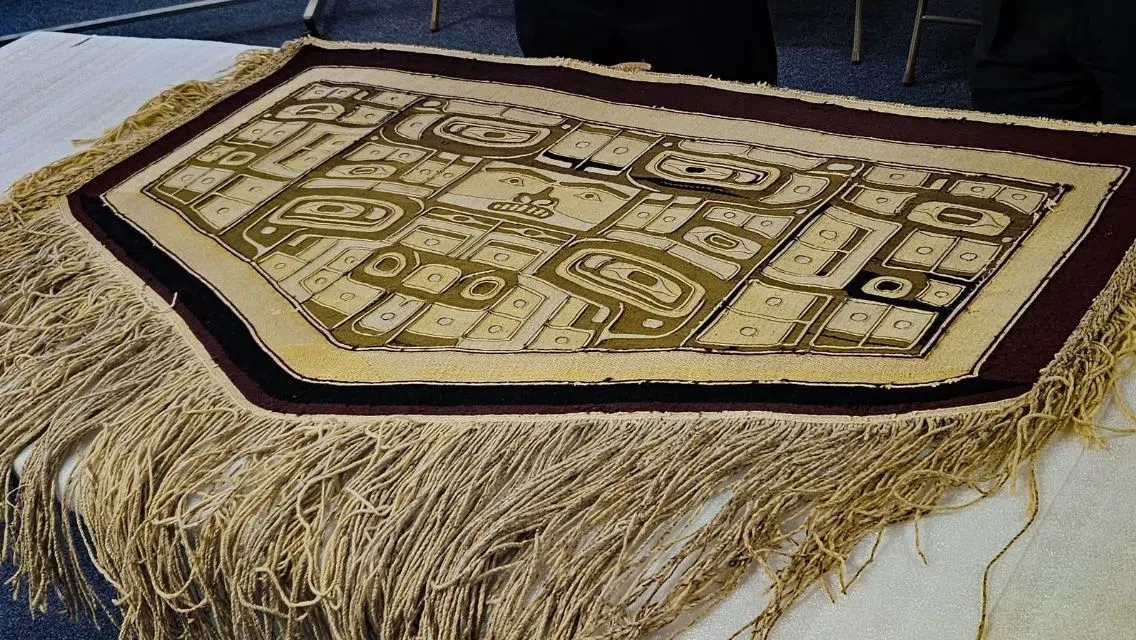
A historic Alaskan tribal Chilkat blanket that has been on display at the Rahr-West Art Museum since 1950 is undergoing testing in an attempt to return the historic garment to its original community. PC: Fox 11 Online
MANITOWOC, WI (WTAQ-WLUK) — A piece of Alaskan tribal culture that has called Manitowoc home for decades is undergoing testing in an attempt to return the historic object to its original community.
Dating all the way back to 1950 when the Rahr-West Art Museum was founded, a Chilkat blanket has been part of its permanent collection, with photographic evidence connecting the blanket to the Rahr mansion in the 1940s.
Officials believe the Chilkat blanket — an intricately woven, fringed garment worn during ceremonial events — originated from the Tlingit people of Southeastern Alaska. It likely made its way to Wisconsin through a series of sales in the early 1900s.
But on Friday, the blanket took its first step toward returning home. After six years of communicating with Sealaska Heritage Institute, the Rahr-West is putting the Chilkat blanket on a one-year loan.
Specialists from Sealaska Heritage Institute, a non-profit dedicated to advancing cultures of Southeast Alaska, will analyze the blanket’s animal and plant fibers to try to identify the community from which the tribal blanket came from. The goal is to return it to its original home.
“The importance of a Chilkat blanket goes back many, many thousands of years. Chilkat blankets have their own spirit, so they are viewed as a member of the clan. So, the importance of reuniting a blanket with the clan is of utmost importance to Sealaska heritage,” said Lee Kadinger, chief operating officer of Sealaska Heritage Institute.
“Truthfully, up until the past few years, we didn’t know that much about it,” said Greg Vadney, executive director of the Rahr-West. “So it’s really interesting that we now have a little bit more information, and we’re hoping to get a whole lot more information about this very important and very sacred Native Alaskan piece.”
For Kadinger, who came from Alaska to personally collect the blanket, it was a bit of a homecoming. He earned a Bachelor’s degree in international business from Lakeland University in Sheboygan.
“For four years of my life, I lived a mere 30 miles, 20 miles from here and it wasn’t until I got to Alaska that I actually knew the significance of this, so to be able to come back home here is really something special,” Kadinger said.
“To be able to now pick up this piece and take it to my new home — where I’ve lived for the last 20-something years in Juneau, Alaska — it’s very special coming back here and taking this piece back home.”









Comments